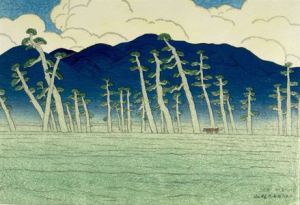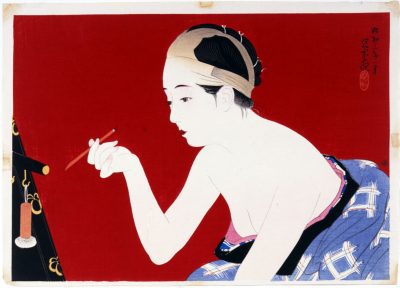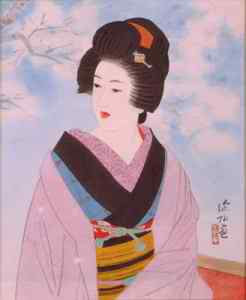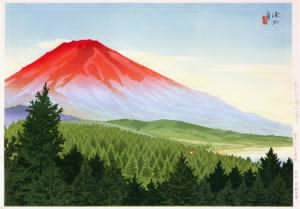Japanese Art and Ito Shinsui: the stunning art of his early golden period
Lee Jay Walker
Modern Tokyo Times

Ito Shinsui (1898-1972) is a pivotal Japanese artist of the twentieth century. Hence he blessed the Taisho and Showa periods of Japanese history through the medium of art. Equally important, the Shin Hanga art movement meant that Ito, and a few other notable artists, connected with the old world of Edo art but fused this with Western elements.
The early life of Ito was extremely dramatic and often traumatic in relation to the economic failings of his father. This applies to his father making rash investments that culminated in bankruptcy. Therefore, completing his elementary school to the full became impossible. However, ironically, this was a blessing in disguise because he became a live-in apprentice in a printing shop and it is true to say his early art is full of intensity and natural beauty.

At a tender young age of 14, it became apparent to many individuals that Ito was blessed with a great artistic career providing he remained focused. His apprenticeship took place under Kaburagi Kiyokata and in time the famous publisher Watanabe Shozaburo would open the commercial area to Ito.

In another article, I state, “The “Eight Views of Lake Biwa (Omi)” were highly acclaimed because Kawase Hasui became greatly inspired by this painting collection. Other famous collections by Ito include “Twelve Figures of New Beauties,” “Collection of Modern Beauties,” “Twelve Views of Oshima,” “Three Views of Mount Fuji,” and “Ten Views of Shinano.” Also, it is remarkable that the “Eight Views of Lake Biwa (Omi)” was completed in 1918 when Ito Shinsui was extremely young.”

On the website of Artelino, it stipulates, “The shin hanga movement integrated Western elements without giving up the old values of Japanese, traditional woodblock prints. Instead of blindly imitating Western art styles, the new movement concentrated on traditional subjects like landscapes, beautiful women and actor portraits. Inspired by European Impressionism the artists introduced the effects of light and the expression of individual moods. The result was a technically superb and compelling new style of Japanese prints.”
Not surprisingly, the war period, following on from the militarization of Japan, meant that the government of Japan pressed Ito to create propaganda art pieces. The consequences of this period meant that his natural environment of Tokyo became shared by his travels to the South Pacific and the Netherlands East Indies. Moving to the environs of Nagano and then to the rich cultural city of Kamakura would follow this.

Ito leaves a tremendous legacy because he produced countless stunning pieces of art. At the same time, he fused elements of traditional Edo art to new concepts that inspired him from Western art. It is equally true to say that the early art produced by Ito belongs to his golden period.

Modern Tokyo News is part of the Modern Tokyo Times group
DONATIONS to SUPPORT MODERN TOKYO TIMES – please pay PayPal and DONATE to sawakoart@gmail.com
http://moderntokyotimes.com Modern Tokyo Times – International News and Japan News
http://sawakoart.com – Sawako Utsumi personal website and Modern Tokyo Times artist
https://moderntokyonews.com Modern Tokyo News – Tokyo News and International News
http://global-security-news.com Global Security News – Geopolitics and Terrorism
PLEASE JOIN ON TWITTER
https://twitter.com/MTT_News Modern Tokyo Times
PLEASE JOIN ON FACEBOOK
https://www.facebook.com/moderntokyotimes